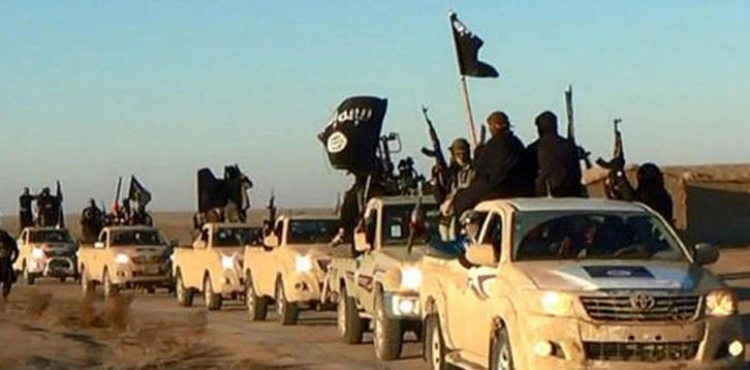Paris _ Agencies
Call them "Their successor" Abu Bakr al-Baghdadi to "continue jihad", launch deadly attacks in Syria and distribute threats to the overseas nations, but the question remains, what is the remaining number of actual fighters to organize the Islamic State?
Many different international estimates and jihadist propaganda on the Internet seek to persuade the world that their defeat on the ground is not a defeat, and given the inherent ambiguity in war zones where independent experts are unable to reach them, ambiguity about the imprecise numbers of elements of State regulation Islamic can continue, as is considered official and experts.
"In December 2017, the spokesman of the US-led coalition estimated about 1,000 Islamic State fighters remaining in Iraq and Syria," the Sufan International Strategic and Intelligence Consulting Group wrote in an analysis.
"Today, the US Department of Defense has just identified from 15500 to 17,000 the number of Islamic State in Iraq and about 14,000 in Syria," said the group´s experts. These large differences in estimates have become common in the campaign against the Islamic State since its inception in 2014. "
In a recent report, United Nations observers have identified 20 to 30,000 Islamic State fighters who are still in Iraq and Syria.
These differences over the exact number of jihadist elements have begun since its establishment: it comes from movements that have remained hidden for years in Iraq, and then from volunteers from all over the region, and later joined by volunteers from all over the world. They crossed the border, in particular the border between Turkey and Syria, in a clandestine manner. The International intelligence services have so far only estimates.
"Today, the main obstacle to reaching a credible figure is that we do not know the number of people killed in their ranks, during the operations of the coalition, the Russian operations and the Iraqi or Turkish operations," Jean-Charles Brezar, head of the Paris Terrorism Analysis Center, told AFP.
"The bodies of the jihadists killed in these air raids are often kept under the rubble, and no one is going to lift them," he said. So, as long as we don´t know the exact number of their deaths, they are considered alive. So some of them are wrongly prosecuted. "
Tori Hameng, a jihadist affairs specialist in Euromanifesto University Anastasia, also questions the figures offered by United Nations experts.
"I don´t believe this number," he told AFP. "But I also think it is impossible to figure out the correct number. First, you must begin by specifying who is considered an element or combatant in the Islamic State?... Remember that in 2015, some 200,000 men were put on the table, because it brought together all those who were working in the management of the Organization. These new numbers today include those with only a weapon or all who work for this project? No one knows. "
Jean-Charles Brezar also states that the other cause of uncertainty is the possibility of a continuous breach of the border between Syria and Turkey. The Turkish army has increased its surveillance operations, but local smugglers can help to cross it.
"A large number of jihadists have secretly moved to Turkey and are still in it, waiting to be able to go to another area of operations," he added. "Here, it´s still very difficult to estimate the numbers," he said. The Islamic State has long been in its ranks to transfer to Turkey important members of the organization, possibly to be redeployed later. "
"We will remain in a state of uncertainty about the exact numbers," Brezar said. "All we know is that there are redeployments in other regions, Pakistan, Afghanistan and the Philippines," he said. They still have the ability to move to cross the border. "
"Even if ISIL is back in a state of rebellion, it is still one of the strongest terrorist groups in history, and neither weapons nor conscripts are missing," said the experts in the Safwan group.












